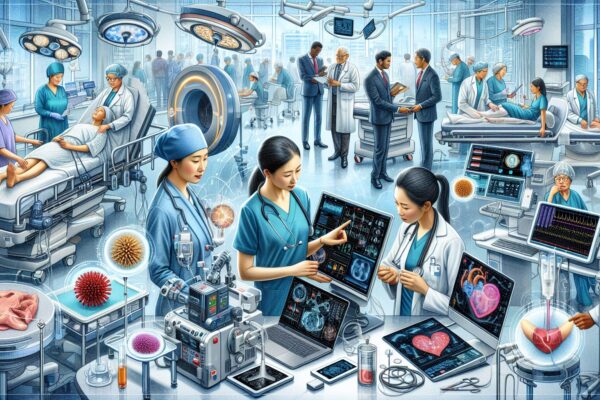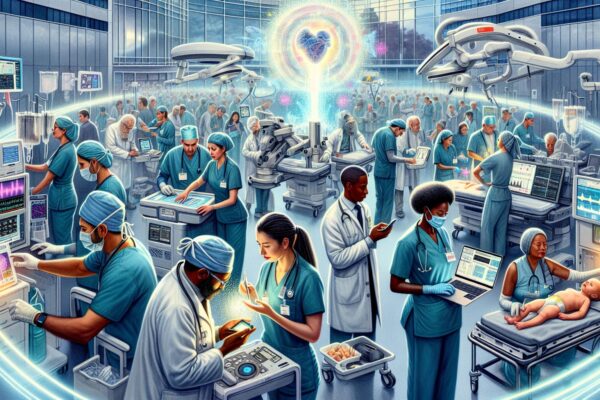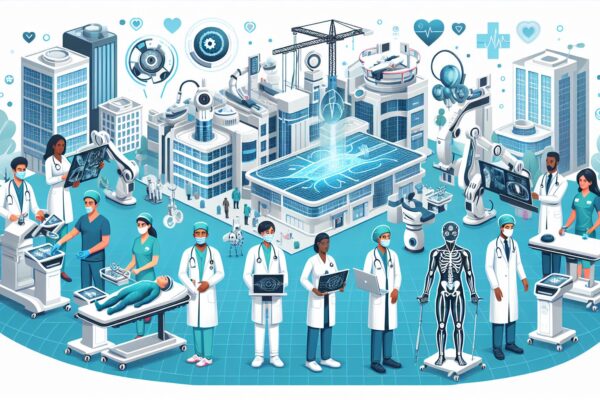As technology continues to advance at a rapid pace, it comes as no surprise that the healthcare industry has also benefited greatly. Medical technology, in particular, has revolutionized the way hospitals operate and provide care to patients. From cutting-edge diagnostic tools to state-of-the-art treatment options, the integration of medical technology has brought about numerous advancements that have significantly improved patient outcomes. In this blog post, we will explore the various ways in which medical technology has transformed hospitals and the future it holds.
Enhancing Diagnostic Capabilities
Gone are the days when doctors relied solely on their clinical expertise and intuition to diagnose illnesses. Medical technology has provided hospitals with a plethora of diagnostic tools that enhance accuracy and improve efficiency. Advanced imaging techniques such as magnetic resonance imaging (MRI) and computed tomography (CT) scans enable doctors to obtain detailed visual representations of internal organs, aiding in the detection of abnormalities or diseases.
Additionally, laboratory advancements have given rise to automated systems capable of performing a wide range of tests with minimal human intervention. These advancements allow for faster and more accurate diagnoses, resulting in better and more timely patient care.
Streamlining Treatment Processes
Another significant contribution of medical technology is the streamlining of treatment processes within hospitals. With the advent of electronic health records (EHRs) and medical imaging systems, healthcare providers can access patient information and medical images instantaneously, regardless of their physical location. This seamless sharing of information not only saves time but also allows for efficient care coordination among multi-disciplinary teams.
Moreover, the introduction of robotic surgical systems has revolutionized the field of surgery. These systems provide surgeons with enhanced precision, dexterity, and visualization, thereby minimizing invasiveness and reducing post-operative complications. In turn, patients experience shorter hospital stays, faster recovery times, and improved surgical outcomes.
Promoting Patient Safety
Patient safety is paramount in any healthcare setting, and medical technology has played a crucial role in mitigating potential risks. Advancements in medication management systems help reduce medication errors by automating prescription processes, ensuring accurate dosages, and providing decision-support tools to healthcare providers. Additionally, technologies such as bedside monitoring systems and wearable devices enable real-time monitoring of patient vital signs, allowing for early detection of deteriorations, thus preventing adverse events.
The Future of Medical Technology in Hospitals
Medical technology continues to evolve rapidly, promising even more significant advancements for hospitals. Artificial intelligence (AI) holds immense potential in assisting healthcare providers with data analysis, clinical decision-making, and predictive analytics. By harnessing the power of AI, hospitals can leverage vast amounts of patient data to personalize treatment plans and implement preventive measures. Furthermore, the rise of telemedicine allows patients to receive medical consultations remotely, reducing healthcare costs and improving accessibility.
In conclusion, medical technology has emerged as a game-changer in the healthcare industry, especially within hospital settings. From enhancing diagnosis and streamlining treatment to promoting patient safety, the integration of medical technology has led to improved patient outcomes and a higher standard of care. As we embark on this era of technological advancements, we eagerly anticipate the future possibilities that medical technology holds in revolutionizing healthcare delivery.




